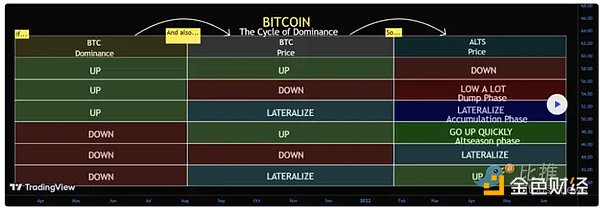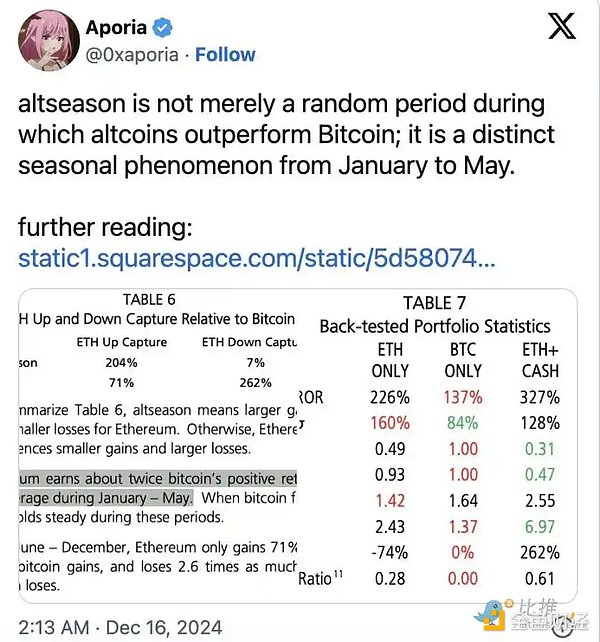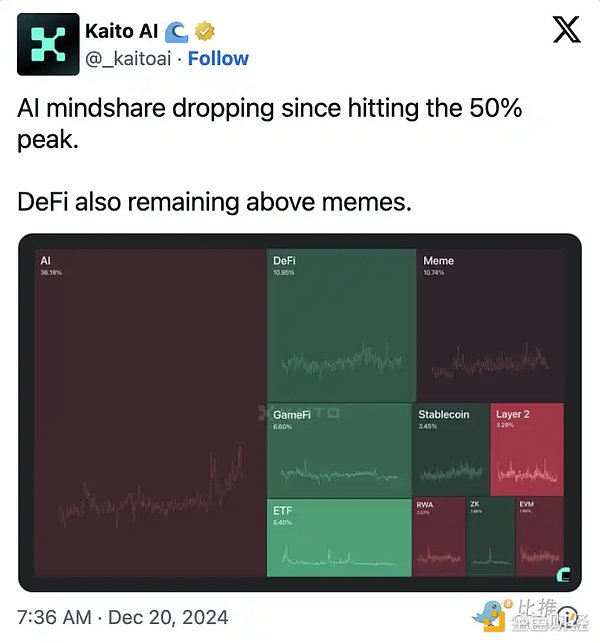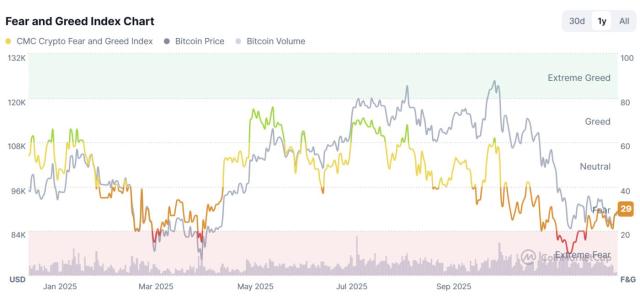Bitcoin halving, historical highs, and the arrival of the Altcoin season - is this the classic recipe for a bull market? Or is it not the case?
First, the BTC halving reduced its issuance rate, thereby triggering a supply shortage. Subsequently, BTC will rise to a historical high, followed by a frenzy of Altcoin speculation, as investors are more inclined to pursue higher returns, and the Altcoin season will fully erupt. Shortly after the latest Bitcoin halving, it broke through the $100,000 mark - a historic milestone. However, the Altcoin market has not seen a surge yet.
Where is the usual rebound? Has the classic script been disrupted? The surge in institutional capital and the liquidity tightening caused by high interest rates, coupled with Trump's positive and bold views on cryptocurrencies, have confirmed one thing: this cycle will be different from any we have seen before.
How is this cycle different?
Each cycle has four stages: accumulation, uptrend, distribution, and downtrend. Although the mechanisms behind these stages are well known, timing the market is one of the most recognized skills. You try to predict when we will enter a specific stage to formulate a trading strategy. However, while the cycles follow a predictable pattern, we cannot forget the broader market context - cryptocurrencies have undergone many changes in the past year.
Institutional Capital
The increasing presence of institutional investors in the Bitcoin market has reshaped the dynamics of the Bitcoin market. With the emergence and growth of cryptocurrency ETFs, Bitcoin has become the seventh-largest asset globally and a new choice for institutional investors. Increased participation by institutional investors usually brings greater price stability. However, for Altcoins, this may not be good news. After all, volatility and significant adjustments will redirect capital flows back into Altcoins. Reduced volatility means that the returns that may flow back into the Altcoin market will be diminished.

This year is a special one. The launch of Bitcoin spot ETFs has brought a large influx of traditional financial capital into the cryptocurrency market. The inflow of institutional funds into these ETFs has triggered a supply shock for Bitcoin, strengthening its dominance. The demand for Bitcoin triggered by the ETFs directly affects Bitcoin's dominance, which is currently around 56%, an important indicator often overlooked by novice traders. It measures BTC's market share relative to Altcoins, providing insight into whether we are in a Bitcoin season (BTC performing well) or an Altcoin season (Altcoins performing well). What does a strong BTC dominance and stable Bitcoin price mean? Altcoin sell-off. And in this cycle, Bitcoin spot ETFs have extended Bitcoin's dominance. This new variable did not exist in previous bull markets, and will undoubtedly make the Altcoin season of 2025 unique.
Macro: Liquidity and Regulation
If you ask any CFO what the most important financial metric is, they will tell you it's liquidity.
In 2023 and 2024, US interest rates will reach one of the highest levels in a long time. Although it has fallen from 5.25% a year ago to the current 4.19%, this is still a relatively attractive yield for risk-free assets. On the other hand, rate cuts often fuel cryptocurrency bull markets, for a simple reason - they create a favorable environment for the flourishing of riskier assets. After all, like in 2021, a risk-free government bond yielding 0.11% is as unattractive as losing capital to inflation. Low interest rates mean cheaper borrowing and higher liquidity, which in turn encourages investors to park their funds where? Yes, you guessed it - cryptocurrencies.
Trump's victory undoubtedly shook the crypto world. The "Bitcoin Bill" has sparked fierce debates in both the crypto and non-crypto circles. If passed, the Senate legislation will require the Treasury Department and the Federal Reserve to purchase 20,000 Bitcoins per year for five years, accumulating 1 million Bitcoins. In other words, about 5% of the global supply. Undoubtedly, supportive crypto regulations are a very meaningful step towards widespread adoption of crypto assets, and Trump's stance has been shown to inspire positive sentiment, with BTC hitting a new all-time high shortly after the future president confirmed the creation of a BTC Federal Reserve plan.
With BTC maintaining its dominance, high interest rates, and the US supporting crypto-friendly regulations, should we expect a full-blown Altcoin super-cycle in 2025? That's a billion-dollar question.
When will the Altcoin season arrive?
If history has taught us anything, it's that Altcoin surges usually follow major Bitcoin moves. However, estimating the magnitude of these price fluctuations - or how long it will take for Altcoins to surge after Bitcoin hits a new high - is impossible.
David Siemer, CEO of Wave Digital Assets, said: "I don't think we'll see the kind of dramatic Altcoin season like 2021, where BTC dominance fell below 40%, anytime soon. But as BTC continues to rise, we'll see significant Altcoin price appreciation."
Siemer later added: "For Altcoins to break out relative to BTC like in 2021, Altcoin usage (adoption) and value (revenue generation) need to increase by orders of magnitude," and emphasized this could take at least 3 years. But once it starts, the Altcoin season itself is easily identifiable, as there are several quite bullish signals:
· Altcoin prices are rising rapidly and outperforming Bitcoin, especially large-cap Altcoins. This means not only are Altcoins as a whole rising, but their gains are exceeding those of Bitcoin.
· Altcoin dominance is soaring, just like the Altcoin season in May 2021. These tokens are taking over the market, with the total market cap of the top 100 Altcoins reaching 1.3 times that of Bitcoin.
· FOMO-driven sentiment, high trading volume, and risk-on investors are exacerbating buying pressure and price momentum.

Cane Island Digital Research shared findings on the seasonality of Altcoin bull runs in its "Proof of Altcoin Season", indicating that ETH is representative of Altcoins experiencing bull markets. It also mentioned the recurring pattern of Altcoin season from January to May.
Narrative Dominance
While the upcoming Altcoin season may be quite different from what we're used to, certain sub-sectors have already carved out a place for themselves in the crypto space. After the VIRTUAL token experienced a 24908.4% surge (i.e., 249x), it can be said that we have entered a new level of narrative dominance.
While memecoins may outperform real-world assets or areas like AI, AI agents stand out, often seen as the driver of the next super-cycle. AI is still at its peak, and as AI agents progress, the on-chain AI economy has already captured a significant market share, which according to Kaito AI data, will reach a peak of 50% by 2024. Driven by unprecedented demand for AI services, this trend is likely to continue in 2025.

Institutional adoption driven by companies like BlackRock has also impacted areas like tokenized real-world assets, making tokenization a fundamental component of the crypto world. While much of the attention is focused on AI and AI agents, traditional finance is exploring tokenization as a viable business choice, with major banks like JPMorgan and Goldman Sachs trying to disrupt the financial market.
How to Prepare for the Altcoin Season?
As we enter 2025, a few things to keep in mind before the Altcoin season arrives.
The dominance of Bitcoin is a classic reference indicator, so please use it well to grasp the timing of transactions. Websites like BlockchainCenter.net can help assess whether the market is currently in an Altcoin season or a Bitcoin season. It's important to note that:
The cryptocurrency market is largely driven by sentiment, so pay attention to regulatory measures, macroeconomic trends, or crypto-native narratives (DeFi, AI agents, meme coins).
Not all Altcoins will follow the price dynamics of Bitcoin. Historically, projects with strong fundamentals or aligned with emerging narratives (such as AI projects) have performed better. However, focus on quality over quantity, and concentrate on projects with strong fundamentals, active teams, and ideally a product-market fit that can inspire a large community.
Corrections are a healthy phenomenon. They indicate that the market is consolidating and allow investors to enter positions before the next upswing. Altcoin seasons typically occur in the late stages of a bull market. Please be patient.
Conclusion
The cryptocurrency market is maturing. Each cycle is a stepping stone and should be viewed as a lesson learned. While meme coins are still reaping rewards, new narratives are becoming increasingly influential. But the most interesting thing is - the currently popular narratives, such as AI agents, are not just a passing fad. Most importantly, we will now face greater impacts from macroeconomic factors and institutional adoption than in any previous bull market. Does this mean we should expect a different Altcoin dynamic this time? To some extent, yes. We should also not blindly follow the patterns of the past few years. The question is not whether an Altcoin season will occur, but when it will occur and how it will differ from the past few years.







